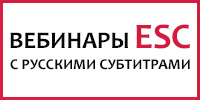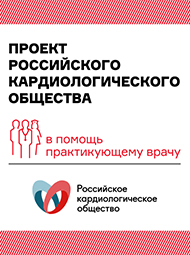New AF Guideline Includes Four Key Changes
WASHINGTON, DC — A new AF guideline by the American Heart Association (AHA), American College of Cardiology (ACC), and Heart Rhythm Society (HRS), in collaboration with the Society of Thoracic Surgery, describes a more precise stroke-risk calculator and when to use aspirin, novel oral anticoagulants, and catheter ablation[1].
Simultaneously published online March 28, 2014 in the Journal of the American College of Cardiology, Circulation, and Heart Rhythm, the guideline supersedes the AF guideline published in 2006[2] and two updates published in 20113,4] and reflects some but not all changes to a 2012 European update[5].
The writing committee's chair, Dr Craig T January (University of Wisconsin School of Medicine and Public Health, Madison), told heartwire that the guideline needed to be updated, given the recent number of new studies and emergence of new drugs.
The guideline provides direction on how to manage the many patients with AF, which "affects between 2.7 million and 6.1 million American adults, and that number is expected to double over the next 25 years," the authors write. AF is associated with a fivefold risk of stroke, threefold risk of heart failure, and twofold risk of dementia and mortality. Symptoms can range from nonexistent to severe, and "AF can be complex and difficult for clinicians to manage," they add.
The guideline contains four significant changes, January explained.
CHA2DS2-VASc Replaces CHADS2
To estimate the risk of stroke in patients with nonvalvular AF, the guideline recommends replacing the CHADS2 score with the more comprehensive CHA2DS2-VASc score, whereby one point is given each for CHF, hypertension, diabetes, vascular disease (prior MI, PAD, aortic plaque), age 65 to 74, and sex category (female), and two points each for aged 75 or older and prior stroke/transient ischemic attack (TIA)/thromboembolism.
"Compared with the CHADS2 score, the CHA2DS2-VASc score for nonvalvular AF has a broader score range (zero to nine) and includes a larger number of risk factors (female sex, 65 to 74 years of age, and vascular disease). In this scheme, women cannot achieve a CHA2DS 2-VASc score of zero," the authors write. "We thought the CHA2DS2-VASc better helped to define the risk, particularly in people at low risk," January said.
Aspirin's Role Diminished
"Aspirin carries with it a small but definable bleeding risk . . . [and] many trials [showed] either no benefit or weak benefit in terms of stroke reduction . . . so there's a diminished role, if any role, for aspirin" to lower stroke risk, January explained.
New Anticoagulants Join Treatment Options
Whereas the only anticoagulant previously recommended was warfarin, the guideline now includes recommendations for the three new anticoagulants for nonvalvular AF that entered the marketplace in the past two years. "For patients with nonvalvular AF with prior stroke, TIA, or a CHA2DS2-VASc score of 2 or greater, oral anticoagulants are recommended. Options include warfarin (INR 2.0–3.0) (level of evidence A), dabigatran etexilate [Pradaxa, Boehringer Ingelheim] (level of evidence B), rivaroxaban [Xarelto, Bayer/Janssen Pharmaceuticals](level of evidence: B), or apixaban [Eliquis, Bristol-Myers Squibb/Pfizer] (level of evidence B)," the guideline states.
Cost is a barrier to widespread use of the newer oral anticoagulants, January noted. Dabigatran and rivaroxaban are contraindicated in patients with end-stage renal disease or on hemodialysis. Apixaban has recently been approved for patients on hemodialysis, but there is almost no clinical experience with this yet, he said.
More Prominent Role for Catheter Ablation
The fourth important change is "the guideline suggests a more prominent role for radio-frequency ablation, particularly as even primary therapy in very symptomatic people, in the treatment of AF," January noted. "In patients with recurrent symptomatic paroxysmal AF, catheter ablation is a reasonable initial rhythm-control strategy prior to therapeutic trials of antiarrhythmic drug therapy, after weighing risks and outcomes of drug and ablation therapy (level of evidence B)," the guideline states.
Evolving Treatment Strategies, Ongoing Research
As the management of patients with AF continues to evolve, some treatment issues are still unsettled, January observed. "With a CHA2DS 2-VASc score of zero, we were comfortable saying that you don't need anticoagulants. But we don't think there are enough data to tell us exactly what to do . . . with a low level of risk—a CHA2DS2-VASc score of 1. Should these people be on aspirin? Should they be on full anticoagulation?" This remains to be determined in further research.
The work of the writing committee was supported exclusively by the ACC, AHA, and HRS without commercial support. All writing committee members disclosed all current healthcare-related relationships, and the committee was formed to include a majority of members with no relevant relationships with industry, led by a chair with no relevant relationships.
Source: www.medscape.com






